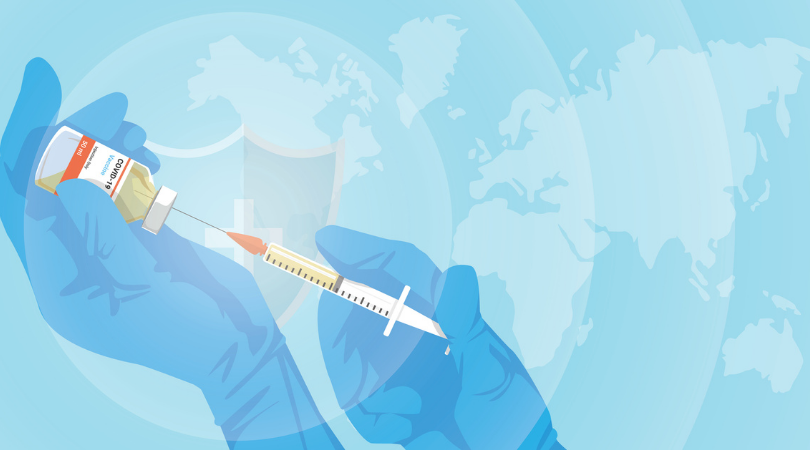Telemedicine: What Does the Future Hold?
Amidst the growing global coronavirus caseload, and the saturation of healthcare systems across the world, the concept of telemedicine has seen a rapid and pronounced rise to prominence.
But just what is telemedicine? The World Health Organization defines it as “The delivery of health care services, where distance is a critical factor, by all healthcare professionals using information and communication technologies for the exchange of valid information for diagnosis, treatment and prevention of disease and injuries […]”.
Telemedicine is not a new phenomenon, however, having registered one of its first applications in the early 20th century when electrocardiograms were transmitted at a distance using the telephone line. The technology would go on to find one of its most famous applications in the 1960s, when it was used by NASA to monitor astronauts’ biometric data away from Earth, with the aim of providing remote support in the event of a medical emergency.
Telemedicine and the COVID-19 Pandemic
With the advancement of ICT, and its ever-increasing penetration rates, telemedicine has seen its possible applications multiply over the last few decades. Before the outbreak of the COVID-19 pandemic, however, there was very limited investment in telemedicine and remote patient monitoring solutions by most countries.
Instead, there were only experimental projects that met with limited physician adoption. In Italy, for instance, 2019 research by the Polytechnic University of Milan’s Digital Innovation in Health Observatory showed that only 5% of specialist doctors and 3% of family doctors used these solutions, although more than half were interested in doing so (osservatori.net).
In response to the pandemic, governments and healthcare providers were forced to resort to telemedicine in an effort to counteract the shortage of available hospital rooms, beds, and medical staff. Private practices were forced to act similarly as they sought to avoid in-person visits where possible, in a bid to limit further spread of the virus. Telemedicine saw a further surge in adoption as countries pushed their healthcare systems to fill the technology gaps impeding its wider adoption.
Looking again at Italy as an example, new data published by the Observatory clearly shows the extent to which the pandemic has brought telemedicine into the spotlight. Three out of four specialist physicians reported believing that telemedicine was critical during the peak of the crisis, with 36% reporting that they were convinced of its benefits and intended to use it in the future. On average, according to general practitioners (GPs), 30% of chronic patient visits and 29% of visits by non-chronic patients could be carried out using digital tools, while for specialist providers these proportions dropped to 24% and 18% respectively.
According to McKinsey, by April 2020, overall telehealth utilization at the global level for office visits and outpatient care was 78 times higher than the level registered in February of the same year. By July 2021, that figure had stabilized “at levels 38X higher than before the pandemic”
Telemedicine in a Post COVID-19 World
Given the above figures, it is clear that telemedicine is undergoing something of a renaissance in various parts of the world. Less technologically advanced countries have rushed to pave the way for its development just as eagerly as their more advanced counterparts.
But what will the future of telemedicine look like once healthcare resources are no longer so thinly stretched? Will it continue along the trajectory it has followed thus far? Or, will it find itself instead relegated to the theoretical realm, as is so frequently the case with such innovative ideas?
The issue needs to be examined from two different perspectives: that of the consumer, on one hand (patients, clinics, hospitals), and that of the providing structures, companies, and governments on the other.
Regarding the former, recent surveys carried out by various institutions indicate that both patients and physicians see great value in telemedicine, with many intending to continue using it once the pandemic subsides.(These results vary greatly depending on the type of care provided – psychiatric care witnessed the highest rate of telemedicine uptake, while specialties such as surgery and ophthalmology, quite logically, saw much less significant uptake rates). (McKinsey, 2021).
Regarding the latter, we need to consider the profitability of telemedicine to the companies supplying the technologies. Viewed from this perspective, telemedicine is unlikely to spur significant market interest if it remains simply a method to conduct remote patient visits.
Analysts seem to agree that videoconferencing visits seem unlikely to disappear any time soon, but that they will have to become more than just a tool to facilitate calls between doctors and patients. Instead, companies active in the sector will have to combine their services with both digital therapy technologies, as well as more traditional treatments. Only vertically integrated players who provide end-to-end solutions will be able to survive.
A Good Strategy: Adding Digital Therapeutics to the Package
For telemedicine to be profitable and hence attractive to the market, companies providing this service will need to integrate it with other functions. Digital therapy technologies serve as a prime example of the type of additional services that could make a company more competitive in the ever-growing digital healthcare sector.
Also known as “digital therapies” (or “DTx”), digital therapy technologies are those that offer therapeutic interventions guided by high-quality software programs. These programs are based on scientific evidence obtained through rigorous clinical trials with the aim of preventing, managing, or treating a broad spectrum of physical, mental, and behavioral conditions.
Digital therapy, then, does not refer simply to telemonitoring interventions, nor does it refer to the types of systems offered by pharmaceutical companies to help patients in the management of their diseases (such as Patient Support Programs to monitor adherence to drug treatment). Rather, it represents a host of validated curative interventions, capable of improving clinical results.
Whereas pharmacological treatments interact with the patient’s biology, digital therapies interact with the thoughts and behaviors of those who use them. They can take the form of apps, video games, websites, or wearable devices, and work by spurring behavioral or lifestyle changes, as well as the application of cognitive-behavioral interventions through the digital creation of guidelines and programs.
There are already various examples of digital therapeutics in the market. In 2017, The FDA approved ReSET, an app that offers cognitive-behavioral therapy to those suffering from addiction and opiate abuse issues. That was followed by the June 2020 approval of Endeavor, the first video game for therapeutic purposes, designed for children with attention deficit hyperactivity disorder (ADHD).
From Telemedicine to Digital Care to Value-Based Healthcare
The deployment of telemedicine, coupled with the addition of other digital health services such as digital therapeutics, goes hand in hand with an approach that has been gaining traction in recent years; that of Value-Based Healthcare (VBHC).
This approach recognizes the importance of putting the patient at the center of the healthcare discourse, urging policy-makers and healthcare providers to build a system in which the human side of the patient is not only acknowledged but pushed to the forefront of all considerations.
In this context, telemedicine, digital therapeutics, and digital care, in general, can help to create a more holistic and personalized approach to healthcare.
Considered alongside the more obvious benefits of telemedicine, such as the decentralization of health interventions and the increased reach of, and accessibility to medical care, it would seem that telemedicine is destined to thrive, becoming a fundamental element of care in the years to come – but only so long as it is accompanied by a general evolution towards more patient-centered, cost-saving and socially sustainable healthcare policies.
Author: Pietro Morabito
Sources
https://www.marionegri.it/magazine/terapie-digitali
https://www.eng.it/resources/whitepaper/doc/telemedicina/ENG21_IP_Telemedicina_ita.pdf
https://www.who.int/goe/publications/goe_telemedicine_2010.pdf
https://www.osservatori.net/it/ricerche/osservatori-attivi/sanita-digitale
You may also like
Warning: Undefined variable $content in /var/www/sdomains/nexatestwp.com/infomineo.nexatestwp.com/public_html/wp-content/themes/infomineo/single.php on line 235
Warning: Undefined variable $content in /var/www/sdomains/nexatestwp.com/infomineo.nexatestwp.com/public_html/wp-content/themes/infomineo/single.php on line 235
Warning: Undefined variable $content in /var/www/sdomains/nexatestwp.com/infomineo.nexatestwp.com/public_html/wp-content/themes/infomineo/single.php on line 235
Warning: Undefined variable $content in /var/www/sdomains/nexatestwp.com/infomineo.nexatestwp.com/public_html/wp-content/themes/infomineo/single.php on line 235
Warning: Undefined variable $content in /var/www/sdomains/nexatestwp.com/infomineo.nexatestwp.com/public_html/wp-content/themes/infomineo/single.php on line 235
Warning: Undefined variable $content in /var/www/sdomains/nexatestwp.com/infomineo.nexatestwp.com/public_html/wp-content/themes/infomineo/single.php on line 235









